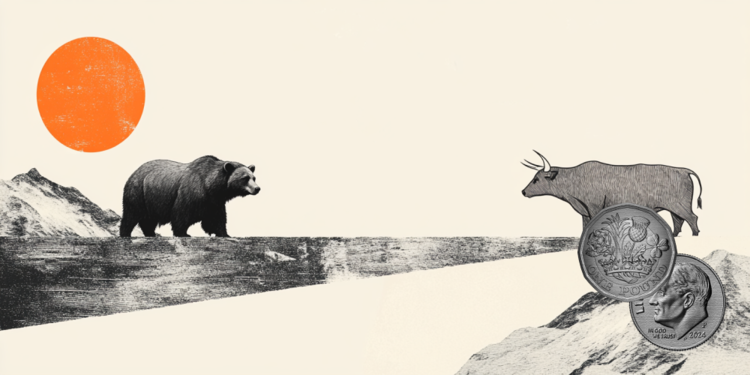Chinese scientists have successfully cloned a rhesus monkey. The information was disclosed in the study “Dissection of the reprogramming mechanism and application of trophoblast replacement in the nuclear transfer of monkey somatic cells”, published in the scientific journal Nature Communications this Tuesday (16). The document details the experience of cloning the monkey and addresses advances in cloning technology.
Retro is a rhesus monkey born on July 16, 2020. Now, more than three years old, he is doing well and growing healthily, according to scientist Falong Lu. The researcher is one of the authors of the study that describes how Retro was born. The monkey is the second species of primate that scientists have successfully cloned.
The team responsible for Retro is the same one that announced in 2018 that it created two identical fascicularis monkeys – both still alive today – by cloning. Zhong Zhong and Hua Hua are six years old today.
“We managed to create the first live and healthy rhesus monkey clone, which is a big step that turns the impossible into possible, even though its efficiency is considered low when compared to other fertilized embryos,” said Lu. “Currently, we still haven’t managed to get another clone born alive.”
The first mammal cloned was Dolly the sheep in 1996, using a technique called “somatic cell nuclear transfer” to create clones using eggs. In this process, scientists reconstruct an egg that has not been fertilized by fusing it with somatic cell nuclei with an egg that does not have a nucleus.
Since Dolly's birth, scientists have cloned several species of mammalian animals, such as pigs, cows, horses and dogs. But the process is 50/50, as it is possible to get it right or wrong, with a small percentage of transferred embryos actually resulting in viable offspring.
“In some ways, we’ve made a lot of progress on this. After Dolly, many species of mammals were cloned, but the truth is that inefficiency remains the biggest obstacle in this process”, says Miguel Esteban, the principal investigator at the Guangzhou Institute of Biomedicine and Health at the Chinese Academy of Sciences. He was not involved in the Retro project, but collaborated with research members on other primate studies.
The process of cloning a monkey
The team of scientists, located in Shanghai and Beijing, used a modified version of the technique used in Dolly's cloning of fascicularis monkeys to then improve the methodology for cloning the rhesus monkey.
During hundreds of failed cloning attempts, scientists discovered that the outer membrane that forms the placenta did not develop as it should. According to Miguel Esteban, to solve this problem, they carried out a process called “internal cell mass transplantation, which places internal cells glued together inside a non-cloned embryo, which allows the clone to develop normally.
The team then tested a new technique using 113 reconstructed embryos, 11 of which were transferred to seven “surrogates”, resulting in the birth of a monkey. This is Retro.
“We believe there may be additional anomalies that need to be corrected,” explains Lu. “Strategies to delve deeper into and increase the success rate of the somatic cell nuclear transfer process in primates remains our main focus in the future.”
The first cloned monkeys, Zhong Zhong and Hua Hua, are now over six years old and are living a “happy and healthy life” with other primates of the same species. And the life of the monkeys looks promising: according to scientist Falong Lu, the researchers did not identify any impediments that could limit the longevity of the cloned monkeys.
Zhong Zhong and Hua Hua are often described as the first cloned monkeys. However, a rhesus monkey was cloned in 1999 using a simpler cloning method. In this scenario, scientists separate the embryos – what happens in twin pregnancy, for example.

The challenges of cloning
Chinese scientists reported that being able to clone monkeys could help speed up biomedical research that has limitations. Research on non-human primates, which are the closest to humans, has been fundamental to medical advances that can save lives, such as the development of vaccines against Covid-19. The information was presented in a study during a panel at the National Academy of Science, Engineering and Medicine of China, released in May.
The use of monkeys in scientific research is a controversial issue because of concern and discussion about the ethics surrounding animal welfare. The team said it followed Chinese laws and guidelines on using non-human primates in studies. The UK's Royal Society for the Prevention of Animal Cruelty said it has “a number of ethical and welfare concerns surrounding the use of animal cloning technology, as cloning animals requires procedures that can cause pain and suffering to animals, in addition to having high rates of failure and animal mortality”.
Being able to produce genetically identical monkeys could be useful, according to Miguel Esteban. “The research is proof of principle that cloning can be done in different species of non-human primates and opens the door to new ways to increase efficiency in these methods. Cloned monkeys can be genetically modified in complex ways that wild monkeys cannot; this has many implications for disease modeling. [Com isso,] There is also the prospect of being able to conserve species”, he adds.
Researcher Luís Montoliu, a researcher at Spain's National Biotechnology Center who was not involved in the research, said that the cloning of the two species of monkey indicates two things: “First, it is possible to clone primates. And second and not least, it is extremely difficult to be successful with these experiments, as they have a very low success rate.”
Still according to Montoliu, the low success rate of the cloning method showed that “not only is human cloning unnecessary and debatable, but, if attempted, it would be extraordinarily difficult and ethically unjustifiable”.
Lu, one of the project's authors, countered: “Reproductive cloning of a human being is completely unacceptable.”
Source: CNN Brasil
Charles Grill is a tech-savvy writer with over 3 years of experience in the field. He writes on a variety of technology-related topics and has a strong focus on the latest advancements in the industry. He is connected with several online news websites and is currently contributing to a technology-focused platform.







